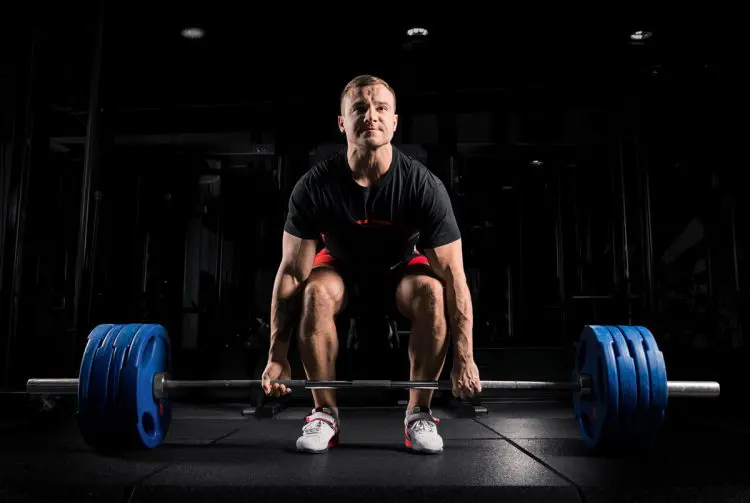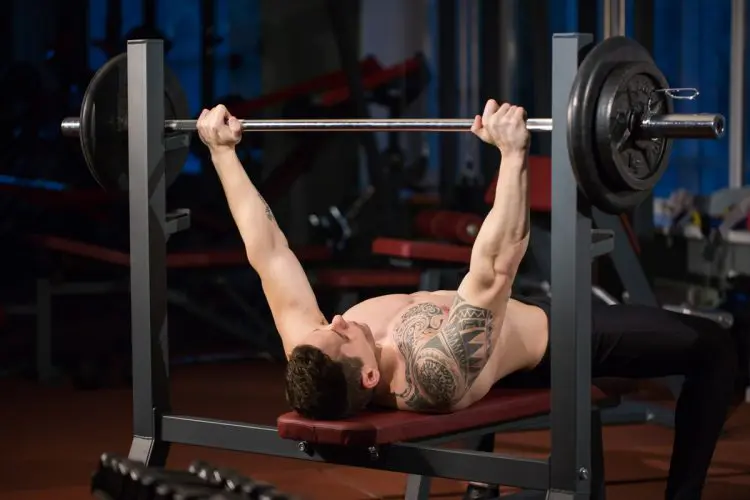The age-old argument of which program is best for building muscle refuses to die. Many tout the timelessness of a full body workout as the epitome of simplicity. If building muscle isn’t rocket science, then why complicate things?
On the other hand, split workout enthusiasts swear by fragmenting the body into more focused and specific days to apply more intensity.
With two schools of thought and training styles aiming at the same goal, it’d be interesting to see who takes the cake.
How to Build Muscle?
There’s more to building muscle than lifting weights. Pumping iron is a good start, but there are a few things to understand to know what’s happening behind the scenes.
There’s a lot to uncover when it comes to understanding how and why a muscle grows in size, but for now, we’ll be talking a bit about what we know so far. Increases in muscle size (hypertrophy) are a combination of three main factors — metabolic stress, muscle damage, and mechanical tension. [1]
Level Up Your Fitness: Join our 💪 strong community in Fitness Volt Newsletter. Get daily inspiration, expert-backed workouts, nutrition tips, the latest in strength sports, and the support you need to reach your goals. Subscribe for free!
Metabolic stress
Metabolic stress occurs during exercise and leads to the burning sensation you get from raising lactate production in your muscles. This triggers an anabolic hormone surge which can include human growth hormone and insulin-like growth factors. Practically speaking, you’ll need rep ranges that can achieve that coveted burn in the muscle, which is why many experts advise a range of 8 to 12 for most exercises when hypertrophy is the goal.
Related: How to Get A Skin-Splitting Muscle Pump
Muscle damage
Muscle damage is the localized damage a muscle undergoes during intense training that activates a hypertrophic response. It also triggers a necessary inflammatory reaction which sets in motion various growth factors. Optimal muscle damage — required for achieving growth — is achieved through intense and heavy training that is taken close to failure.
Mechanical tension
Placing stress on the muscle by stretching and contracting induces mechanical tension. Heavy training that puts the most tension on your target muscles for the desired reps is the most effective in achieving the state of hypertrophy.
All these three factors are in play during training at different levels depending on how your training is set up.
Related: 3×3 Workout for Hypertrophy, Strength, Fitness, and Fat Loss
What does it have to do with building muscle?
The three factors mentioned above summarize that muscle building isn’t determined by some magic program or even split. It’s determined by how you apply those factors to optimize your efforts in the gym.
Not everyone possesses the perfect conditions to train optimally. Some of us have hectic schedules, little time to train, and other wrenches thrown into our daily lives.
Let’s break down the differences between a split and full body workout and find out which is best for you to build the most muscle in the shortest time possible.
Full Body Workout
Full body training has fallen in and out of popularity over the decades. In the 1950s and 60s, it was the staple of many strength training athletes and bodybuilders. Great physiques such as Steve Reeves and John Grimek used full body workouts exhaustively throughout their competitive careers and built sought-after bodies idolized by many to this day.
The traditional full body programming normally consists of one exercise per body part. Workout volume on a full body training routine is relatively low as the workout would go on for too long otherwise. The frequency is usually high — up to thrice a week.
The belief is that if you train every muscle more often during the week you’ll stimulate growth more frequently.
One challenge is that the lifter isn’t able to apply enough volume for some areas needing more attention. Additionally, it can be difficult to muster enough intensity for the entire body in every single workout. In other words, it’s a tall order to perform every set perfectly for the entire body.
Pros:
- More frequent workouts
- Missed days aren’t a big deal
- Less demand on each body part
Cons:
- Lacks volume
- Intensity can be challenging
- Difficult to favor specific body parts
More Full-Body Workout:
- Full-Body Workout Plan – Design Your Own + Sample Workouts
- Build Muscle Fast: 30-Minute Full-Body Dumbbell Workout
- Kettlebell Sumo High Pull — How To, Variations and Muscles Worked
- Kettlebell Windmill: Muscles Worked, How To, Benefits and Variations
- Planking It! Five Minute Plank Workout for Shredded Abs
- The 12 Best Trisets for Bodybuilding
- Full-Body Workout To Build Maximum Muscle
Split Workout
Split training has you focus on specific muscle groups on specific days throughout the week. A split training routine can range between two to six days a week.
One of the most common types of training splits is the one-body-part-per-day split. You’ll see many lifters train chest on Monday, back on Tuesday, etc.
Level Up Your Fitness: Join our 💪 strong community in Fitness Volt Newsletter. Get daily inspiration, expert-backed workouts, nutrition tips, the latest in strength sports, and the support you need to reach your goals. Subscribe for free!
The huge advantage of this training style is that it allows you to apply an enormous amount of intensity and volume to your training. You could essentially hit all three factors listed above easily in a split training routine.
The obvious downside to this split is the lack of frequency allowed and the fact that missing only one day of training could possibly throw your entire split awry.
Pros
- Can hone in on a specific body part
- Sufficient volume
- Mental focus is greater since fewer muscle groups are trained
Cons
- Missing days can be difficult to make up
- Easy to go overboard with the volume
- Lose the high-frequency aspect
More Workout Splits:
- 12 Best Workout Splits
- 7 Effective Training Splits
- The Pectoral Split
- The Functional Training Split
- The Best 3-Day Workout Split Routine
- 4-Day Split Workout: 10 Weeks To More Growth and Power
- The Best 5-Day Dumbbell Workout Split
- The Best 5-Day Workout Split Routine
- 6-Day Workout Split for Building Muscle Mass
- Full-Body Vs. Split Workouts: How to Choose
Bridging the gap
So both perspectives have their pros and cons, but there has to be one that’s best for you, right?
Here is where real-life steps in. Optimally, a three-day-per-week, full body program looks to be the best option for most. It ticks a lot of boxes and doesn’t complicate things. It’s especially great for those just getting into lifting and need to practice each foundational lift often. If your life was perfect, any lifter at any level would do very well choosing a full body program. However, life is weird and unpredictable.
If you’re reading this, you’ve probably been lifting for a while and want more from your training, time, and effort. Plus, you likely have stress in your life, messed up schedules, and the random, you know what, hitting the fan at times.
If you’re no longer a beginner and want to squeeze as much out of your training routine into your week as possible, then a split workout program is exactly what you need. Let’s look at a few options to see what might work for you.
Which Split Workout Routine is Best?
We’ve established that a split training routine is the best route for an experienced lifter with a busy schedule. So which split can get you the best result?
Start by looking at your own situation. What does your weekly schedule look like;? How much time do you have to train? Where do you lie on the experience spectrum? After you’ve answered these questions, look at the following criteria —
- Frequency: How many days a week are you available to train?
- Volume: How many sets are you comfortable performing with respect to your split?
- Intensity: How much training intensity can you handle?
- Contingency: Can you make up for missed training days on your busy schedule?
Let’s take a quick look at a few common splits and see which is best for you.
5-Day Split Workout
Here you’ll train one or two body parts per day, which come out to be the entire body being covered at least once per week. Too much rest, not enough stimulation frequency, and little to no room for error (missed days), make this training split unviable for most people.
4-Day Split Workout
In this type of split training routine, around two body parts are trained per day. Slightly better frequency than the five-day split but still inadequate for optimal protein synthesis.
3-Day Split Workout
Two to three body parts trained per day. Close to training each body part twice per week once rest is factored in. Easier to make up missed days.
2-Day Split Workout
Three to four body parts are trained per day. Each body part is easily trained twice per week with plenty of rest days included.
Choosing the best split
If any of the above splits works for you, then, by all means, stay with it and stop reading further.
However, if you’re struggling to make any more progress and feel you’ve hit a plateau, your best bet is either adopt a three or two-day split workout routine. Both provide plenty of frequency, enough volume, and the ability to apply the appropriate intensity to elicit muscle growth.
Here are a few examples:
3-day splits
Example 1
- Day 1: Chest, back
- Day 2: Shoulders, arms
- Day 3: Thighs, calves
- Day 4: Rest
- Day 5: Repeat
Example 2
- Day 1: Chest, shoulders, triceps
- Day 2: Thighs, calves
- Day 3: Back, biceps
- Day 4: Rest
- Day 5: Repeat
2-day splits
Example 1
- Monday: Chest, back, shoulders
- Tuesday: Arms, thighs, calves
- Wednesday: Rest
- Thursday: Chest, back, shoulders
- Friday: Arms, thighs, calves
- Saturday: Rest
- Sunday: Rest
Example 2
- Monday: Upper body
- Tuesday: Lower body
- Wednesday: Rest
- Thursday: Upper body
- Friday: Lower body
- Saturday: Rest
- Sunday: Rest
Wrapping Up
Whichever split you choose, make sure you apply focus, intensity, and progression to every workout. Also, don’t be afraid to switch things up drastically. For example, if you’ve never tried a full body workout, go ahead, and try one for at least two months.
Try one of the splits above and see your gains go where they’ve never been before.
References
- Schoenfeld, Brad J The Mechanisms of Muscle Hypertrophy and Their Application to Resistance Training, Journal of Strength and Conditioning Research: October 2010 – Volume 24 – Issue 10 – p 2857-2872 doi: 10.1519/JSC.0b013e3181e840f3












